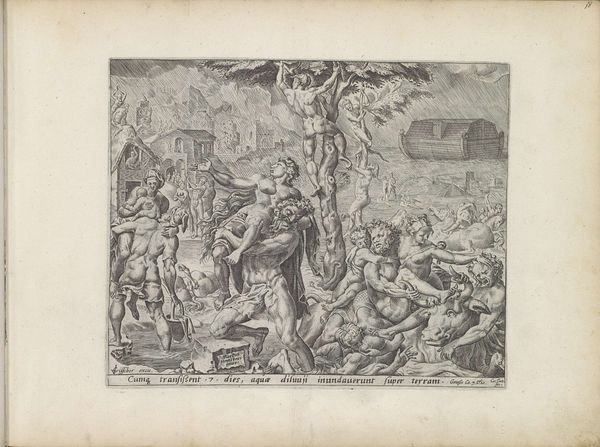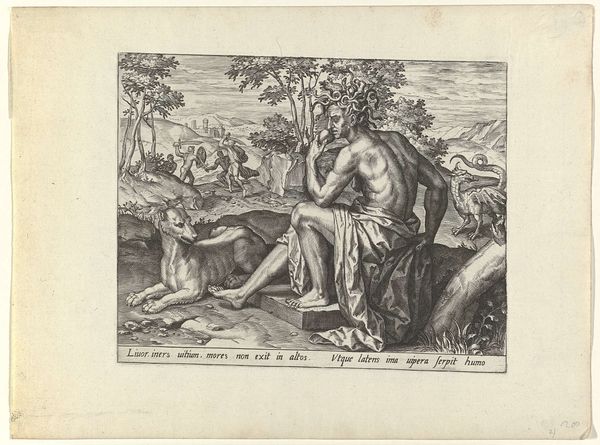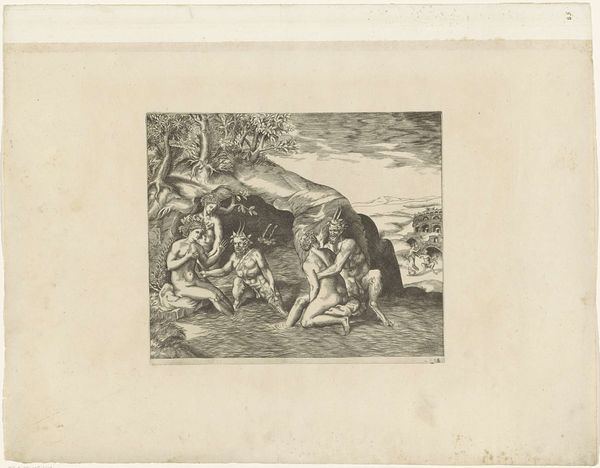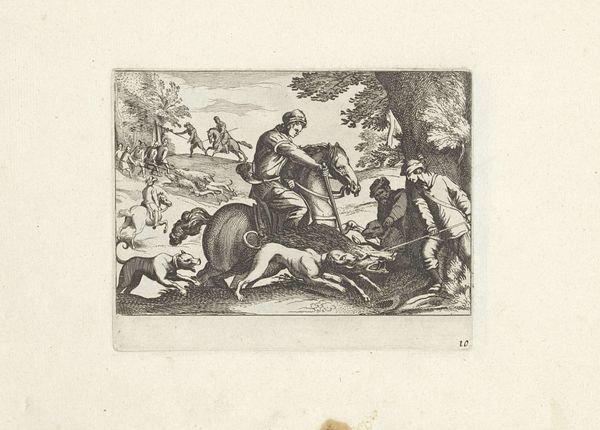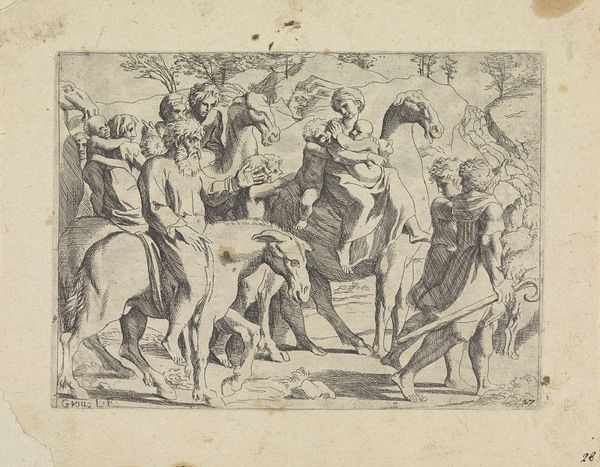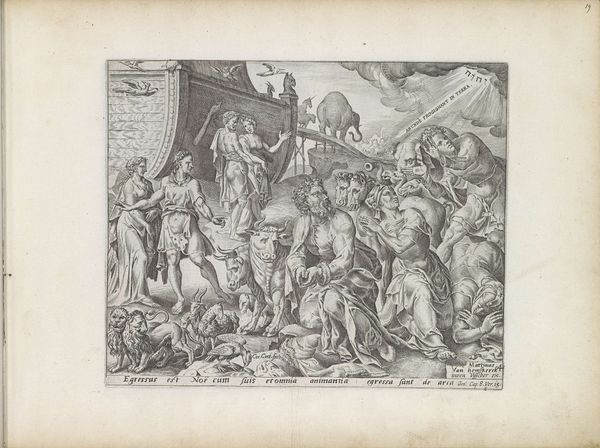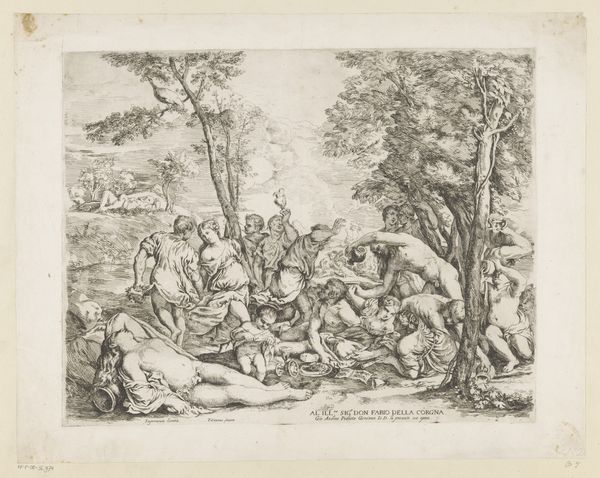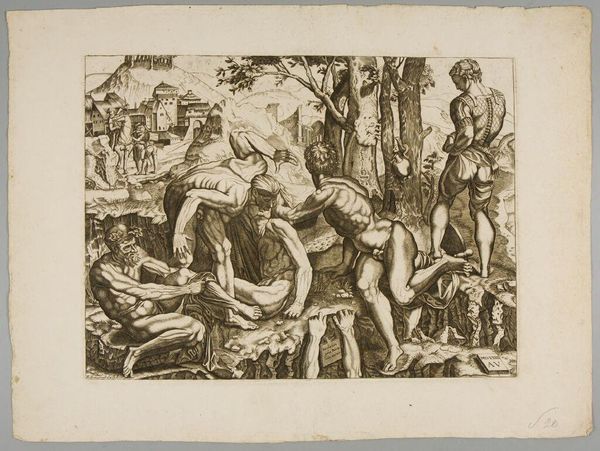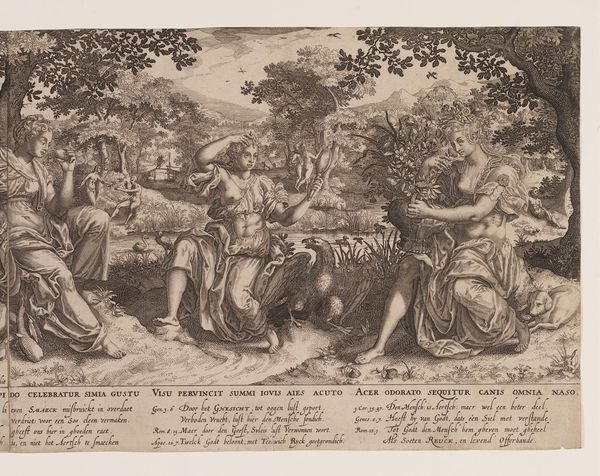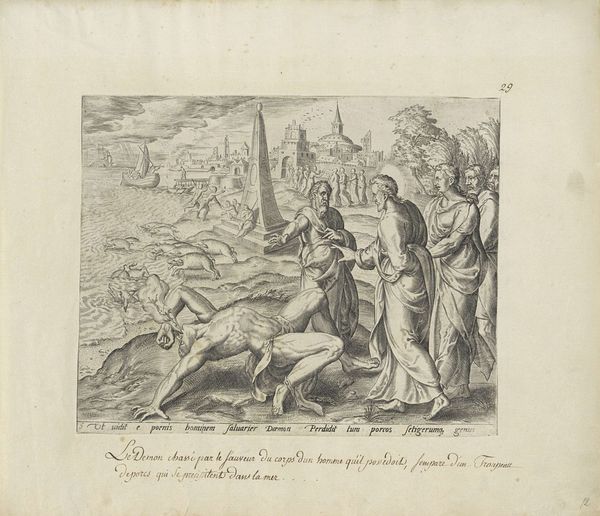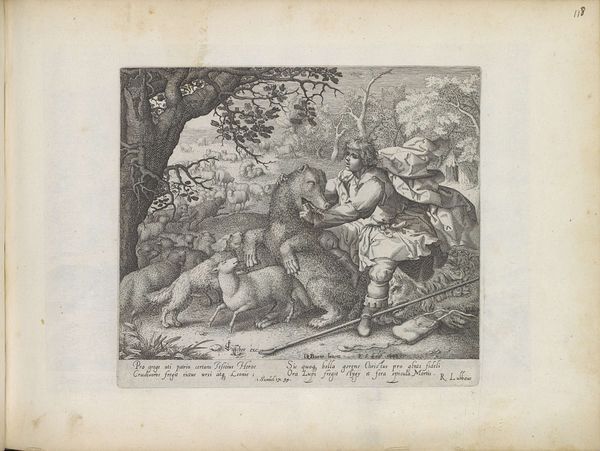
print, engraving
#
baroque
# print
#
landscape
#
figuration
#
history-painting
#
engraving
Dimensions: height 196 mm, width 257 mm
Copyright: Rijks Museum: Open Domain
This image of a Centaur Family, of unknown date, was created anonymously using engraving. The artist would have used a tool called a burin to cut lines into a metal plate, likely copper. Ink is then applied to the plate, and then wiped off the surface, remaining only in the engraved lines. Finally, paper is pressed against the plate, transferring the ink and creating the print. The engraver's skill is evident in the detailed rendering of the centaurs and their woodland environment. The fine lines create a sense of depth and texture, bringing the mythical creatures to life. But the medium also speaks to a broader shift in visual culture. Printmaking enabled the wide distribution of images, catering to a growing market for art among the middle classes. This print, therefore, reflects the rise of a new economy of art, where skilled craftsmanship met the demands of an expanding consumer base. Thinking about the labor and materials involved in its production helps us to appreciate its historical context. It reminds us that art is not just about individual genius, but also about the social and economic forces that shape its creation and reception.
Comments
No comments
Be the first to comment and join the conversation on the ultimate creative platform.
